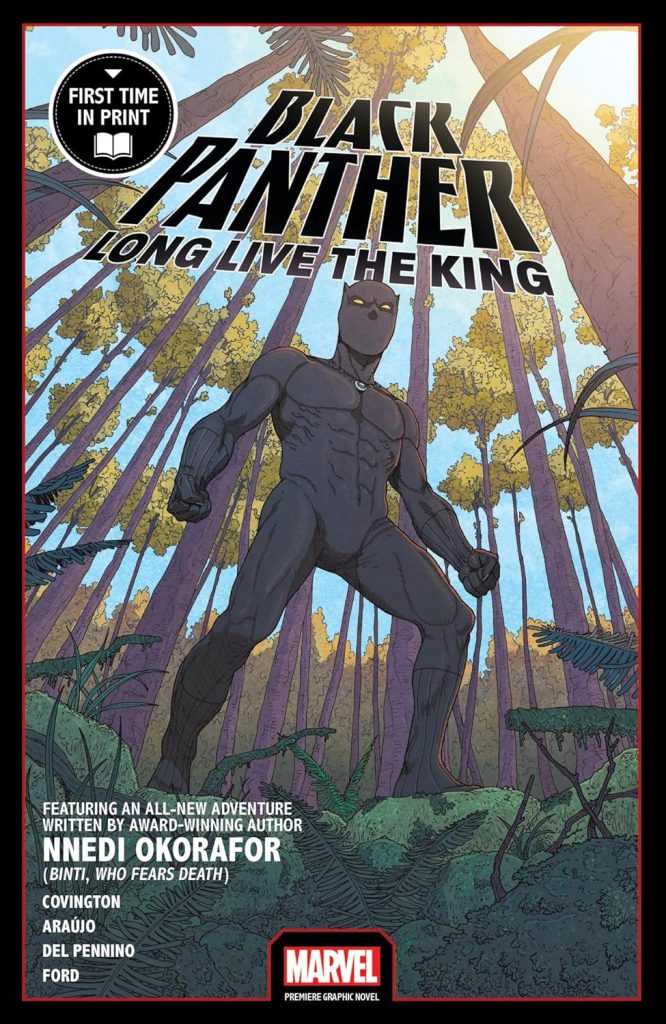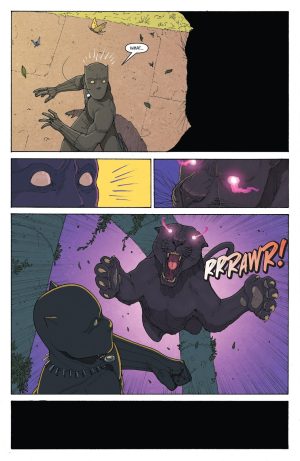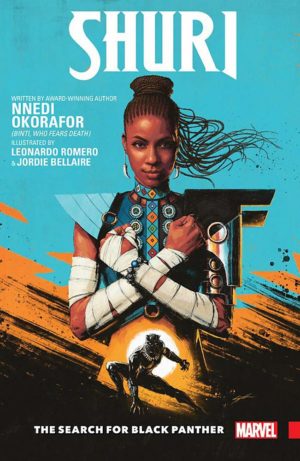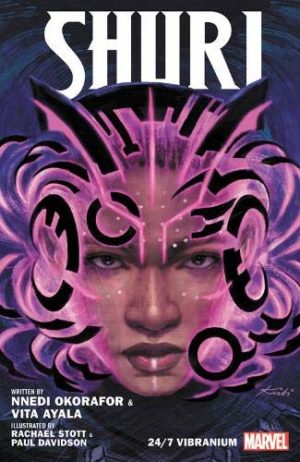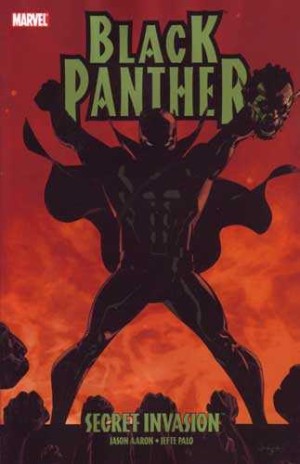Review by Frank Plowright
The first thing that occurs about Long Live the King, concerns Wakanda’s status as a technologically advanced society, and how rarely that comes across in the art. The better renditions show a culture equivalent to an American city, but André Lima Araújo’s Wakanda is far more impressive in featuring imaginative architectural design.
Technology is key to Nnedi Okorafor’s plot, which begins by exploring Wakandan capital Birnin Zana bereft of electrical power after what most people experienced as an earthquake. The Black Panther, however, saw a giant tentacled creature menacing the city. There’s also an infestation of bats, and T’Challa is led to an area of Wakanda beyond the capital where the residents prefer a simpler life not as dependent on technology.
It ties into the theme of the past informing the present. While the Black Panther status is hereditary and symbolic, Okorafor’s preference is to spotlight the person wearing the suit, so most of the time T’Challa’s not masked and converses with people who know him well. The conversation can dominate, and while the threat is well conceived, the feeling is that Okorafor has a greater interest in the societies of Wakanda than T’Challa as a superhero. That, however, leads to her pleasingly unconventional ending to the three-parter, where Araújo is excellent all the way through.
A surprise is sprung with the fourth chapter, by the creative team of Aaron Covington and Mario Del Pennino jumping back to T’Challa’s past in ‘Keep Your Friends Close’. It reveals Long Live the King as three separate stories, this ordinary, a standard superhero outing with a barely credible ally and gratuitous use of random animals.
Okorafor is also the author of the final selection, which visits an alternate Earth to look at a Nigerian woman calling herself the Black Panther. Otherwise confined to a wheelchair, as detailed in Venomverse, Ngozi bonded with a symbiote enabling her to move freely. Marvel has been very slow to introduce viable non-white characters, and at times there’s been a reluctant box-ticking feel about their doing so, but due to Okorafor’s engaging character and Tana Ford’s emotionally strong art, Ngozi is something stronger. The visual design of her as Black Panther/Venom is transformational and creative, and her personality transcends a standard story.
The combination of Okorafor and Araújo is the strongest inclusion and occupies half the book, which would have been better for Okorafor writing throughout.
